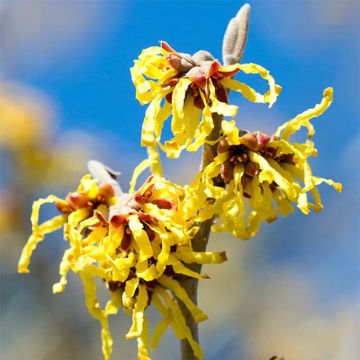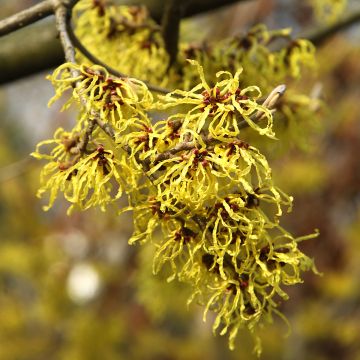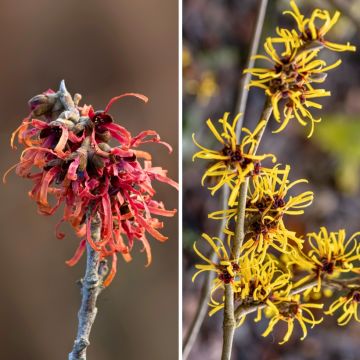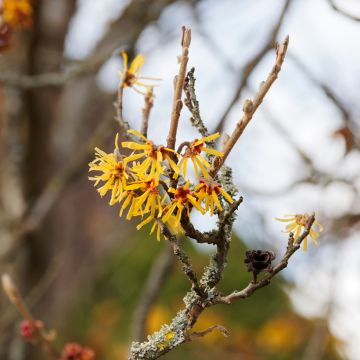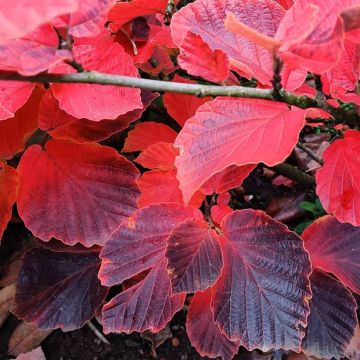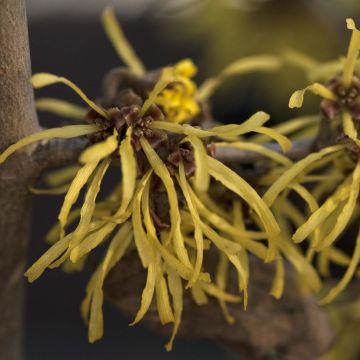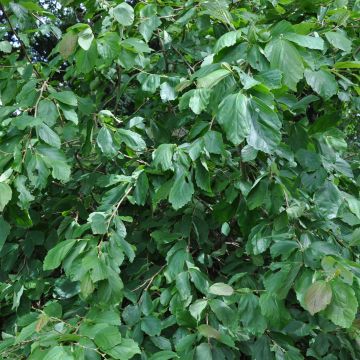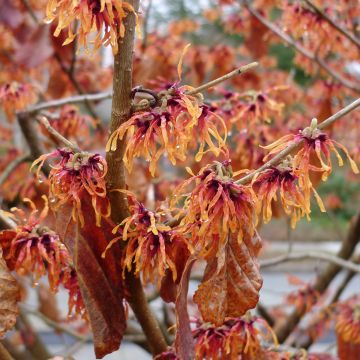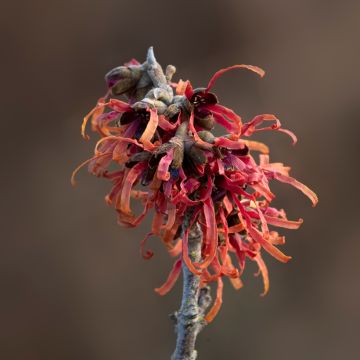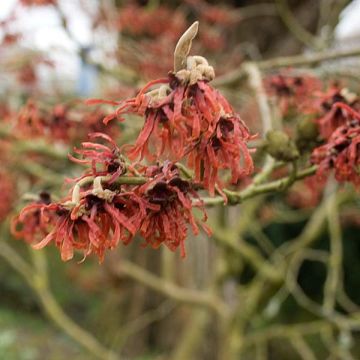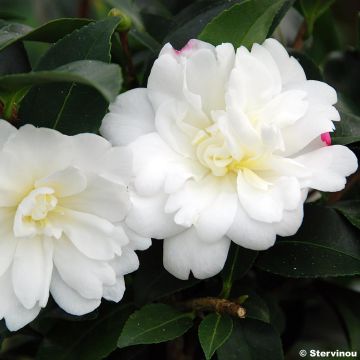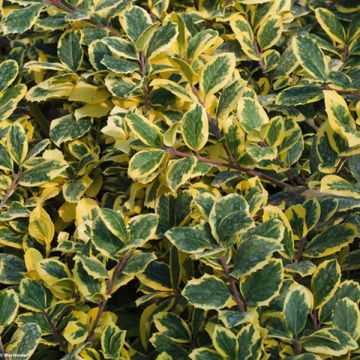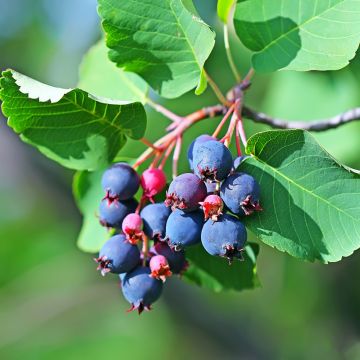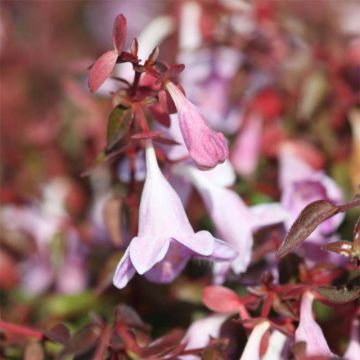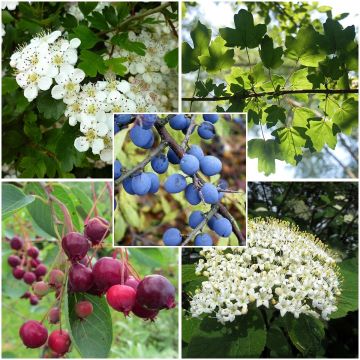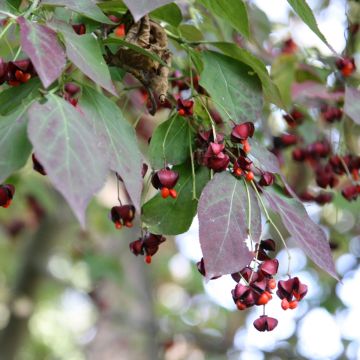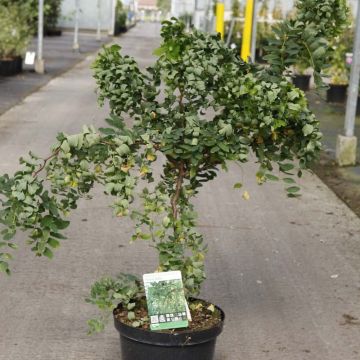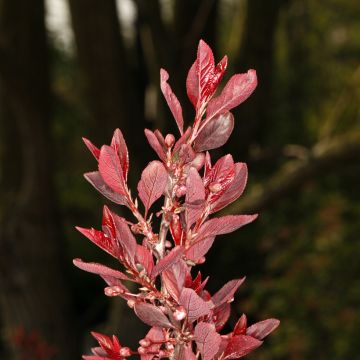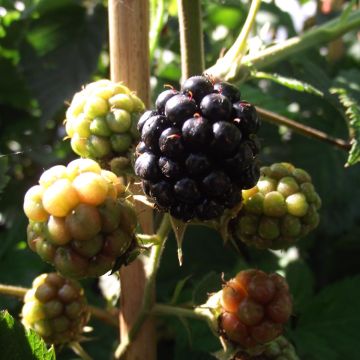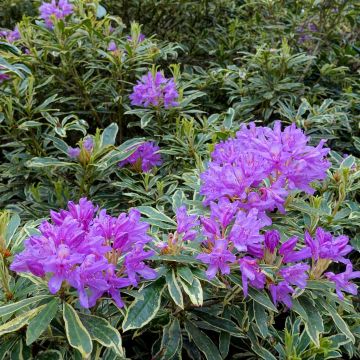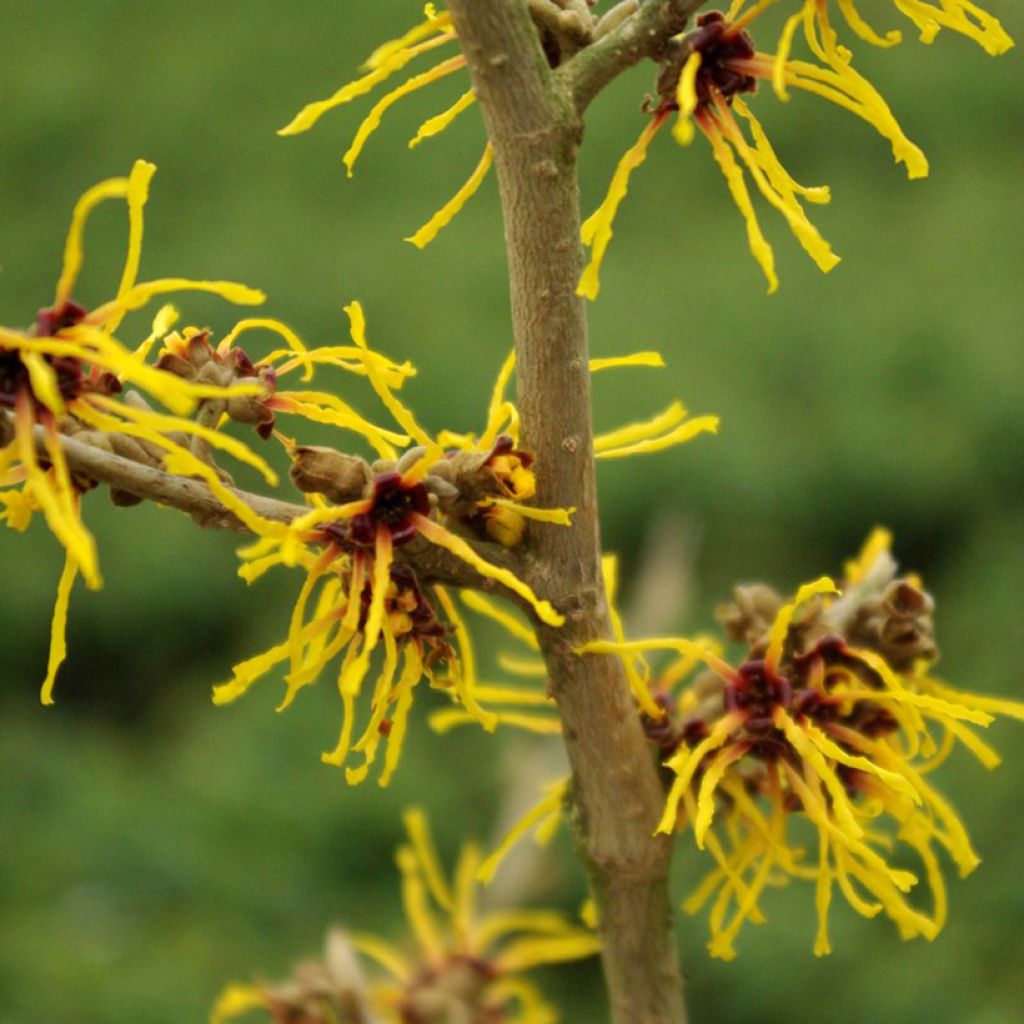

Hamamelis intermedia Barmstedt Gold
Hamamelis intermedia Barmstedt Gold
Hamamelis x intermedia Barmstedt Gold
Witch Hazel, Hybrid Witch Hazel
Why not try an alternative variety in stock?
View all →This plant carries a 24 months recovery warranty
More information
We guarantee the quality of our plants for a full growing cycle, and will replace at our expense any plant that fails to recover under normal climatic and planting conditions.
From €5.90 for pickup delivery and €6.90 for home delivery
Express home delivery from €8.90.
Does this plant fit my garden?
Set up your Plantfit profile →
Description
Hamamelis x intermedia Barmstedt Gold is an attractive Witch Hazel for several reasons. This bush blooms in the middle of winter, covering itself with small flowers with a spider-like grace, in a golden yellow colour marked with orange at the base. In addition to brightening up dark days, they diffuse a pleasant honey scent in the surroundings. The green leaves, resembling those of the Hazel, then appear and turn light yellow in autumn, creating colourful scenes. This bush is demanding in terms of soil, which should be at least neutral and preferably acidic, humus-bearing, and remain moist in summer, and has slow growth. That's why it is best to plant it close to the house to fully enjoy it.
Hamamelis belongs to the small family of Hamamelidaceae, mainly known to enthusiasts for a few genera such as Corylopsis, with its early yellow flowering, Fothergilla, or Loropetalum. Barmstedt Gold is a variety that has been awarded the prestigious Award of Garden Merit by the Royal Horticultural Society of England. It is the result of cross-breeding between Hamamelis japonica and H. mollis, originating respectively from Japan and China. The German nurseryman Hans Hachmann is the breeder and named it in honour of his hometown, Barmstedt, in the heart of the largest production area in Europe, north of Hamburg.
With slow growth, this Hamamelis will reach 1.50 m after 10 years of planting and approximately 3 m in height with the same spread at maturity. It has a very characteristic spreading habit, with initially airy branching that becomes denser with age. In January and February (between December and March depending on the climate), it produces abundant flowering in an intense golden yellow colour, while many other varieties are more sulfur yellow. The flowers, about 2 cm in diameter, are formed by thin elongated filaments that give them a spider-like appearance, or even a sea urchin-like appearance due to their dense arrangement on the branches. The centre is orange and the flowers emit a pleasant fragrance, welcome at this time of year. Although the flowers are quite small, their quantity and the absence of leaves at this season make them stand out.
When the flowering fades, the leaves appear, resembling those of hazel. Measuring approximately 10 to 12 cm in length and 6 to 8 cm in width, they are oval-shaped, dark green on the upper side and much lighter on the underside with well-marked veins. They are carried by short petioles of 1 cm and are slightly drooping. In case of drought, they droop even more and may even turn yellow. When the first autumn cold arrives, the foliage turns light yellow.
Hamamelis Barmstedt Gold will delight all those who wish to enjoy their garden all year round. It is easier than one might think to create winter scenes. In the background, plant trees with decorative bark, such as the Fascination Birch, which truly lives up to its name with its trunk ranging in colour from copper to bluish-white and its foliage turning yellow in autumn. To add an autumn touch of red and orange, a Brown Sugar Japanese Maple will fit well under the protective shade of the birch. The colour of its foliage evolves during the season, and in winter, its red wood is very decorative. Essential in your flowerbed is the Autumn Camellia (Camellia sasanqua) which will reward you with its white, pink, or red flowers, depending on the variety, in autumn or winter. The Dawn Viburnum bodnantense, whose clusters of pale pink flowers with an intoxicating fragrance also bloom in the middle of winter, will create a magnificent autumnal contrast when its foliage turns deep purple.
Report an error about the product description
Hamamelis intermedia Barmstedt Gold in pictures
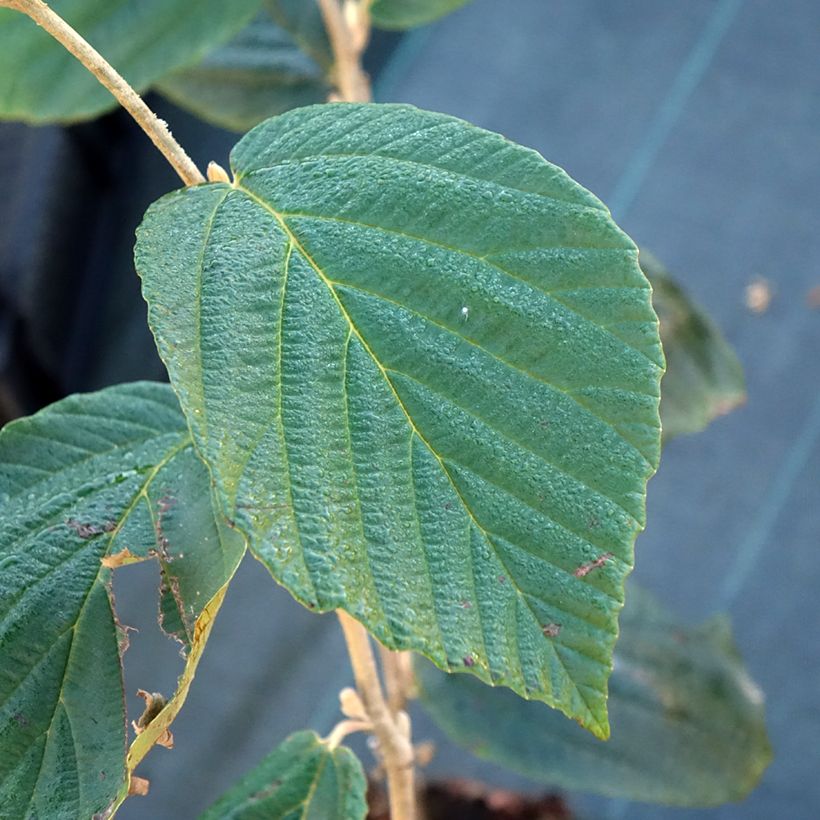

Plant habit
Flowering
Foliage
Botanical data
Hamamelis
x intermedia
Barmstedt Gold
Hamamelidaceae
Witch Hazel, Hybrid Witch Hazel
Cultivar or hybrid
Other Hamamelis - Witch-hazel
Planting and care
To fully enjoy the beauty of your Hamamelis x intermedia Barmstedt Gold, plant it near the house so that it stands out against a dark background of evergreen foliage. A sunny exposure in winter and partial shade protected by a wall or deciduous trees for the rest of the year will be better than scorching sun. Being intolerant to limestone, it should be grown in acid soil, or at least in non-limestone soil enriched with leaf compost. Tip: Hamamelis dislike limestone soils, which they indicate by the summer yellowing of their leaves and reduced flowering. To facilitate their establishment, incorporate acid soil during planting. The soil should remain moist, even in summer. Mulching around the base of the plant will help maintain moisture. A sufficiently deep and humus-bearing soil, even on limestone subsoil, should not hinder the growth of the hamamelis.
Planting period
Intended location
Care
This item has not been reviewed yet - be the first to leave a review about it.
Hedge shrubs
Haven't found what you were looking for?
Hardiness is the lowest winter temperature a plant can endure without suffering serious damage or even dying. However, hardiness is affected by location (a sheltered area, such as a patio), protection (winter cover) and soil type (hardiness is improved by well-drained soil).

Photo Sharing Terms & Conditions
In order to encourage gardeners to interact and share their experiences, Promesse de fleurs offers various media enabling content to be uploaded onto its Site - in particular via the ‘Photo sharing’ module.
The User agrees to refrain from:
- Posting any content that is illegal, prejudicial, insulting, racist, inciteful to hatred, revisionist, contrary to public decency, that infringes on privacy or on the privacy rights of third parties, in particular the publicity rights of persons and goods, intellectual property rights, or the right to privacy.
- Submitting content on behalf of a third party;
- Impersonate the identity of a third party and/or publish any personal information about a third party;
In general, the User undertakes to refrain from any unethical behaviour.
All Content (in particular text, comments, files, images, photos, videos, creative works, etc.), which may be subject to property or intellectual property rights, image or other private rights, shall remain the property of the User, subject to the limited rights granted by the terms of the licence granted by Promesse de fleurs as stated below. Users are at liberty to publish or not to publish such Content on the Site, notably via the ‘Photo Sharing’ facility, and accept that this Content shall be made public and freely accessible, notably on the Internet.
Users further acknowledge, undertake to have ,and guarantee that they hold all necessary rights and permissions to publish such material on the Site, in particular with regard to the legislation in force pertaining to any privacy, property, intellectual property, image, or contractual rights, or rights of any other nature. By publishing such Content on the Site, Users acknowledge accepting full liability as publishers of the Content within the meaning of the law, and grant Promesse de fleurs, free of charge, an inclusive, worldwide licence for the said Content for the entire duration of its publication, including all reproduction, representation, up/downloading, displaying, performing, transmission, and storage rights.
Users also grant permission for their name to be linked to the Content and accept that this link may not always be made available.
By engaging in posting material, Users consent to their Content becoming automatically accessible on the Internet, in particular on other sites and/or blogs and/or web pages of the Promesse de fleurs site, including in particular social pages and the Promesse de fleurs catalogue.
Users may secure the removal of entrusted content free of charge by issuing a simple request via our contact form.
The flowering period indicated on our website applies to countries and regions located in USDA zone 8 (France, the United Kingdom, Ireland, the Netherlands, etc.)
It will vary according to where you live:
- In zones 9 to 10 (Italy, Spain, Greece, etc.), flowering will occur about 2 to 4 weeks earlier.
- In zones 6 to 7 (Germany, Poland, Slovenia, and lower mountainous regions), flowering will be delayed by 2 to 3 weeks.
- In zone 5 (Central Europe, Scandinavia), blooming will be delayed by 3 to 5 weeks.
In temperate climates, pruning of spring-flowering shrubs (forsythia, spireas, etc.) should be done just after flowering.
Pruning of summer-flowering shrubs (Indian Lilac, Perovskia, etc.) can be done in winter or spring.
In cold regions as well as with frost-sensitive plants, avoid pruning too early when severe frosts may still occur.
The planting period indicated on our website applies to countries and regions located in USDA zone 8 (France, United Kingdom, Ireland, Netherlands).
It will vary according to where you live:
- In Mediterranean zones (Marseille, Madrid, Milan, etc.), autumn and winter are the best planting periods.
- In continental zones (Strasbourg, Munich, Vienna, etc.), delay planting by 2 to 3 weeks in spring and bring it forward by 2 to 4 weeks in autumn.
- In mountainous regions (the Alps, Pyrenees, Carpathians, etc.), it is best to plant in late spring (May-June) or late summer (August-September).
The harvesting period indicated on our website applies to countries and regions in USDA zone 8 (France, England, Ireland, the Netherlands).
In colder areas (Scandinavia, Poland, Austria...) fruit and vegetable harvests are likely to be delayed by 3-4 weeks.
In warmer areas (Italy, Spain, Greece, etc.), harvesting will probably take place earlier, depending on weather conditions.
The sowing periods indicated on our website apply to countries and regions within USDA Zone 8 (France, UK, Ireland, Netherlands).
In colder areas (Scandinavia, Poland, Austria...), delay any outdoor sowing by 3-4 weeks, or sow under glass.
In warmer climes (Italy, Spain, Greece, etc.), bring outdoor sowing forward by a few weeks.

































